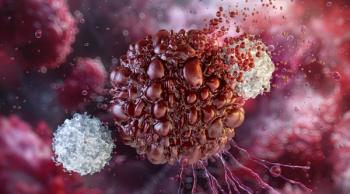
- ONCOLOGY Vol 24 No 6
- Volume 24
- Issue 6
Navigating the Treatment Choices for Mycosis Fungoides
Galper et al. should be commended for their concise and useful review of the diagnosis and management of mycosis fungoides (MF). It is notable that all of the authors are radiation oncologists. While the reader may expect a radiation oncologist’s perspective on the management of mycosis fungoides, their review goes beyond highlighting the various radiation techniques used in the treatment of MF. It highlights the major diagnostic dilemmas when evaluating patients with skin lesions that eventually are diagnosed as MF or its leukemic counterpart, Sézary syndrome (SS). It also stresses the importance of a multidisciplinary approach in diagnosing and caring for MF patients involving dermatology, dermatopathology, radiation oncology, and hematology/oncology, and provides a concise review of the treatment options in the MF and SS armamentarium. Navigating these options requires a good understanding of the natural history of the disease, the side effects of treatment, the expected response rates of treatment, the median time to response, the patient’s comorbid conditions, and goals of care.
Galper et al. should be commended for their concise and useful review of the diagnosis and management of mycosis fungoides (MF). It is notable that all of the authors are radiation oncologists. While the reader may expect a radiation oncologist’s perspective on the management of mycosis fungoides, their review goes beyond highlighting the various radiation techniques used in the treatment of MF. It highlights the major diagnostic dilemmas when evaluating patients with skin lesions that eventually are diagnosed as MF or its leukemic counterpart, Szary syndrome (SS). It also stresses the importance of a multidisciplinary approach in diagnosing and caring for MF patients involving dermatology, dermatopathology, radiation oncology, and hematology/oncology, and provides a concise review of the treatment options in the MF and SS armamentarium. Navigating these options requires a good understanding of the natural history of the disease, the side effects of treatment, the expected response rates of treatment, the median time to response, the patient’s comorbid conditions, and goals of care.
After spending time in a cutaneous lymphoma clinic and caring for MF and SS patients on a regular basis, it is clear how devastating this disease can be on many levels. Clinically, patients with advanced disease (ie, stages IIB–IV) do poorly, with relapsing disease despite multiple therapies and a median survival time of 3 to 5 years. They endure years of a disfiguring disease and often avoid being seen in public spaces. Emotionally, many patients are depleted as they endure ongoing therapies. Financially, treatment for MF/SS often requires expensive oral and topical therapies not fully reimbursed by insurance, as well as home services for wound and skin care and frequent hospitalizations for infections.
Diagnostic Dilemma
A diagnosis of MF may typically take months to years and is often confused with benign dermatoses such as eczema or psoriasis. In most cases, a skin biopsy confirms the diagnosis and is often done when skin manifestations persist or worsen after therapeutic interventions. Galper et al. elegantly summarize the difficulty in making the diagnosis. The diagnostic algorithm for cutaneous T-cell lymphoma proposed by Pimpinelli et al.[1] is included in the National Comprehensive Cancer Network (NCCN) Clinical Practice Guidelines[2] for MF and SS. However, one caveat is that the differential diagnosis includes other poorly defined entities such as pseudolymphomas due to drug-induced skin reactions, skin manifestations associated with connective tissue disorders, lymphomatoid dermatitis, and lichen sclerosus. A good clinical history is as essential as histopathology. It remains difficult to diagnose MF if the skin lesions present outside the commonly affected sun-protected areas, and referrals to centers that have expertise in cutaneous lymphomas are often helpful.
Total Skin Electron Beam Therapy
Galper et al. provide an excellent review of the data supporting use of TSEBT. While this modality may be considered for early T1–T2 lesions, radiation of the total skin surface area for lesions that include only 10% of the body surface area may seem a little daunting to some patients. Evidence to support use of TSEBT includes the experience at Hamilton Regional Cancer Center, which reports 90% complete remission in patients with early-stage MF and a 50% rate of progression-free survival at 10 years.[3] Time to treatment effect is considered more immediate than light-based therapies such as ultraviolet B (UVB) or psoralen plus ultraviolet A (PUVA), however, side effects of TSEBT should be emphasized. Acute effects of TSEBT include pruritus, increased scaling, erythema, decreased perspiration, skin swelling, and skin ulceration or discomfort. Acute effects on normal skin include general inflammation in sun-affected areas, scalp alopecia, nail stasis, and swelling of hands and feet. The chronic effects of TSEBT are xerosis, often of the hands and feet; nail dystrophy; fingertip paresthesia; and scalp alopecia. Patients should be counseled by their referring physician and their radiation oncologist about these side effects vs other skin-directed treatment options such as PUVA with respect to the potential impact on quality of life. One small study by the Yale Therapeutic Radiology group analyzed quality of life indicators in 13 patients who received TSEBT.[4] The investigators reported that the majority of patients found it difficult to get through TSEBT and suffered a number of treatment-related adverse events compared with patients undergoing other types of treatment for early stage MF.
Galper et al. also describe the efficacy of TSEBT for tumor-stage T3 lesions, quoting a 50% to 100% response rate in various studies. Results, however, are impacted by the degree of skin involvement. A retrospective study by the Yale Therapeutic Radiology group analyzed disease-free survival with respect to extent of skin involvement (ESI).[5] When stratified by ESI, 100% of patients with 9% or less ESI were disease-free at 18 months compared with patients who had 10% or greater ESI, all of whom had relapsed by 18 months. For those with 9% or less ESI, the median disease-free survival (DFS) and overall survival (OS) were not reached at 63 and 65 months, respectively. The median DFS and OS for the group with 10% or greater ESI were only 4 months and 24 months, respectively. These differences were statistically significant. Therefore, the extent of skin involvement of patients with T3 cutaneous T-cell lymphoma is a prognostic indicator of DFS and OS for those who have been treated definitively with TSEBT. Lastly, in a study by Jones et al., patients with advanced disease (stage IIB–IV) who had peripheral blood involvement fared less well (10% 5-year PFS) than those without circulating Szary cells (20% 10-year PFS).[3] Therefore, TSEBT may not be the ideal primary therapy for all patients with T3 or tumor stage disease.
So what is the consensus of when to use TSEBT? The NCCN guidelines recommend TSEBT at a dose of 30–36 Gy for patients with “severe skin symptoms or generalized thick plaque or tumor disease, or poor response to other therapies,” and the guidelines also list the possibility of combining TSEBT with adjuvant therapies such as interferon or bexarotene (Targretin).[2] Other adjuvant treatments not mentioned in the guidelines include extracorporeal photopheresis and histone deacetylase inhibitors. The European Organisation for Research and Treatment of Cancer (EORTC) recommends TSEBT for stage IB and IIA (patch-plaque) MF.[6] For limited stage IIB (tumor) MF treated with TSEBT, the 5-year progression-free survival approaches 50%.[6] For more extensive tumors, TSEBT is considered palliative, because the disease typically recurs.[6] For stage III (erythrodermic) MF or SS, patients without peripheral blood involvement can be treated with TSEBT as initial therapy with 66% 10-year progression-free survival, however, for those with peripheral blood involvement TSEBT is considered palliative.
Conclusions
At the Dartmouth Hitchcock Medical Center (DHMC) multidisciplinary practice for cutaneous T-cell lymphomas, patients with tumors or thickly indurated plaques are often referred for photon beam radiation and then treated with systemic therapy such as bexarotene and/or interferon-alpha. For more extensive tumors, we do consider first-line TSEBT if immediate skin control is needed but follow this with systemic therapy because of the high relapse rate. The penetration of TSEBT is only to a depth of 4–5 mm, so for thicker plaques or more vertical tumors, TSEBT may not be sufficient unless “boosts” are given to discrete tumors. For erythrodermic MF without peripheral blood involvement, we consider TSEBT if immediate disease control is needed, and follow this with systemic therapy. At DHMC, as at other centers that offer TSEBT, many patients with MF travel more than 1 hour for consultation and treatment, which makes TSEBT less feasible for many. We consider extracorporeal photopheresis, PUVA, bexarotene, and interferon-alpha alone or in combination for erythrodermic MF. For erythrodermic SS, we prefer extracorporeal photopheresis in combination with bexarotene and/or interferon-alpha. TSEBT can be also used to palliate otherwise difficult to treat diffuse skin patches, tumors, or erythrodermic patients who are refractory to treatment with other agents, although more heavily pretreated patients are less likely to have a durable response.
The techniques described by the Yale Therapeutic Radiology group provide guidance for centers that do not routinely administer TSEBT. One goal of therapy, as described by the authors, is to administer uniform radiation treatment to the entire skin surface and minimize overdosing. More formal prospective quality of life testing should be done for future clinical trials that incorporate TSEBT, since this mode of treatment is being incorporated into phase I and II studies of many of the new biologic systemic therapies.
Given that there are now a panoply of treatment options for MF, it is best to discuss multiple options with the patient, as he/she may have preconceived notions regarding certain therapies. Also there may be relative contraindications to treatment approaches based on the patient’s comorbid conditions. Lastly, interchange amongst the disciplines of dermatology, radiation oncology, and hematology/oncology is encouraged at the time of evaluation of new patients or patients who are refractory to therapy.
Financial Disclosure:The author has no significant financial interest or other relationship with the manufacturers of any products or providers of any service mentioned in this article.
References:
References
1. Pimpinelli N, Olsen EA, Santucci M, et al: Defining early mycosis fungoides. J Am Acad Dermatol 53:1053-1063, 2005.
2. National comprehensive cancer network (NCCN) practice guidelines in oncology – v.2.2009. Available at www.nccn.org.
3. Jones G, Wilson LD, Fox-Goguen L: Total skin electron beam radiotherapy for patients who have mycosis fungoides. Hematol Oncol Clin North Am 17:1421-1434, 2003.
4. Yu JB, Khan AM, Jones GW, et al: Patient perspectives regarding the value of total skin electron beam therapy for cutaneous t-cell lymphoma/mycosis fungoides: A pilot study. Am J Clin Oncol 32:142-144, 2009.
5. Quiros PA, Kacinski BM, Wilson LD: Extent of skin involvement as a prognostic indicator of disease free and overall survival of patients with t3 cutaneous t-cell lymphoma treated with total skin electron beam radiation therapy. Cancer 77:1912-1917, 1996.
6. Jones GW, Kacinski BM, Wilson LD, et al: Total skin electron radiation in the management of mycosis fungoides: Consensus of the European Organisation for Research and Treatment of Cancer (EORTC) cutaneous lymphoma project group. J Am Acad Dermatol 47:364-370, 2002.
Articles in this issue
over 15 years ago
Diagnosis and Management of Mycosis Fungoidesover 15 years ago
Comparative Effectiveness and Comparative Costsover 15 years ago
Turmeric (Curcuma longa, Curcuma domestica)Newsletter
Stay up to date on recent advances in the multidisciplinary approach to cancer.






























































































